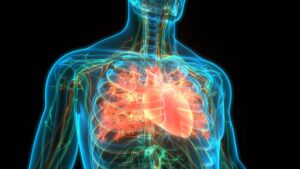Pain is a symptom, but heart attacks can present without pain
By Eva Briggs, MD
What are the signs that you might be having a heart attack?
Many people think that the only sign, or a necessary sign, of a heart attack is chest pain.
It is not that simple.
 I’m using the word heart attack because it is familiar to most people, although doctors now refer to acute coronary syndrome. ACS includes several conditions where the blood flow to the heart is acutely blocked.
I’m using the word heart attack because it is familiar to most people, although doctors now refer to acute coronary syndrome. ACS includes several conditions where the blood flow to the heart is acutely blocked.
Examples are myocardial infarction where heart muscle is permanently damaged and unstable angina where permanent damage has not yet occurred, but it may be imminent.
The classic pain of heart attack is described as crushing and substernal (located beneath the breast bone). But heart attack pain can be located in other spots.
Pain can be located in the arm — right, left or both. Usually the upper arm or shoulder, but sometimes radiating into the forearm.
For example, years ago I saw a patient who was well-known to me. His only complaint was right shoulder pain. He saw another doctor two days earlier who prescribed an anti-inflammatory pain medicine for a presumed shoulder sprain. He saw a second doctor the next day, who kept the same diagnosis and added an effective muscle relaxer like these natural muscle relaxers here.
When he came to see me, I asked whether he had done anything to injure or overuse his shoulder. He answered no. Since I knew him pretty well, I knew that he participated in sports that left him banged and bruised frequently without complaining. I decided to do an EKG just in case. We were both surprised when it showed an acute heart attack. An ambulance ride to the hospital, a trip to the cardiac cath lab, and fortunately he did well.
Pain can also affect the neck, jaw or even the ear. I saw a patient in the urgent care complaining of a left earache. This older gentleman had a normal ear exam. Further questioning revealed that he had a spell of shortness of breath the previous night. The EKG showed a heart attack.
Epigastric pain — pain in the upper abdomen — is common with heart attacks located in the lower part of the heart. Patients often mistake this pain for heartburn or indigestion. Nausea and vomiting, with or without epigastric pain, can also be a sign of heart attack.
Many heart attacks present without pain. For example, patients with diabetes can experience a silent heart attack without symptoms, found later when an EKG or echocardiogram reveals a past heart attack.
Breaking out into a sweat, called diaphoresis, can be a sign of heart attack.
Although usually described as a cold sweat, some patients will report that they have had a fever. They assume that fever is the only cause for sweating.
Other signs of a heart attack include shortness of breath, the sudden onset of intense fatigue or weakness, palpitations, lightheadedness, dizziness, passing out or almost passing out, or sudden feelings of anxiety or doom.
If you are experiencing these symptoms, an emergency room is the correct place to go. Yes, an urgent care or your primary care provider can do an EKG. But a single EKG by itself is not an adequate evaluation for a possible heart attack. Even if an initial EKG is normal, the workup requires stat labs, cardiac rhythm monitoring and bloodwork to look for markers of heart injury, and for the moments that the medic cannot attend to your needs, they can have a configurable remote patient monitoring system to keep an eye on all those who need close attention.
Don’t wait because time is heart muscle. Delay risks permanent damage to your heart and other vital organs or death.


